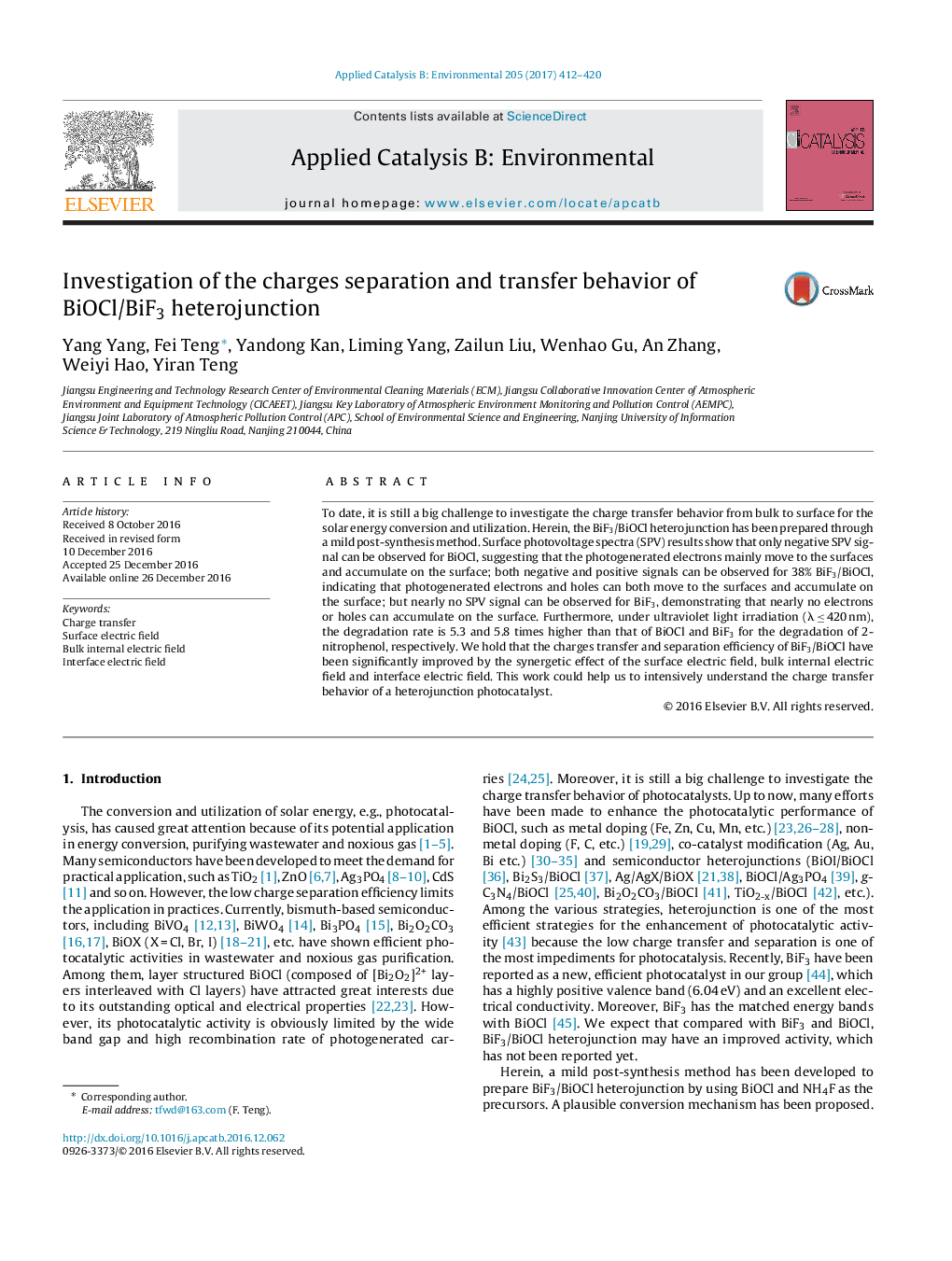| Article ID | Journal | Published Year | Pages | File Type |
|---|---|---|---|---|
| 6454354 | Applied Catalysis B: Environmental | 2017 | 9 Pages |
•BiF3/BiOCl heterojunction was prepared by a simple post-synthesis method.•BiOCl, BiF3/BiOCl and BiF3 show different charge transfer behaviors.•Charge separation of BiF3/BiOCl is greatly improved by triple electric fields.•BiF3/BiOCl shows a greatly improved activity by the improved charge separation efficiency.
To date, it is still a big challenge to investigate the charge transfer behavior from bulk to surface for the solar energy conversion and utilization. Herein, the BiF3/BiOCl heterojunction has been prepared through a mild post-synthesis method. Surface photovoltage spectra (SPV) results show that only negative SPV signal can be observed for BiOCl, suggesting that the photogenerated electrons mainly move to the surfaces and accumulate on the surface; both negative and positive signals can be observed for 38% BiF3/BiOCl, indicating that photogenerated electrons and holes can both move to the surfaces and accumulate on the surface; but nearly no SPV signal can be observed for BiF3, demonstrating that nearly no electrons or holes can accumulate on the surface. Furthermore, under ultraviolet light irradiation (λ ≤ 420 nm), the degradation rate is 5.3 and 5.8 times higher than that of BiOCl and BiF3 for the degradation of 2-nitrophenol, respectively. We hold that the charges transfer and separation efficiency of BiF3/BiOCl have been significantly improved by the synergetic effect of the surface electric field, bulk internal electric field and interface electric field. This work could help us to intensively understand the charge transfer behavior of a heterojunction photocatalyst.
Graphical abstractFigure optionsDownload full-size imageDownload high-quality image (112 K)Download as PowerPoint slideThe charges transfer and separation efficiency of BiF3/BiOCl has been greatly improved by the synergetic effect of the surface electric field, bulk internal electric field and interface electric field.
